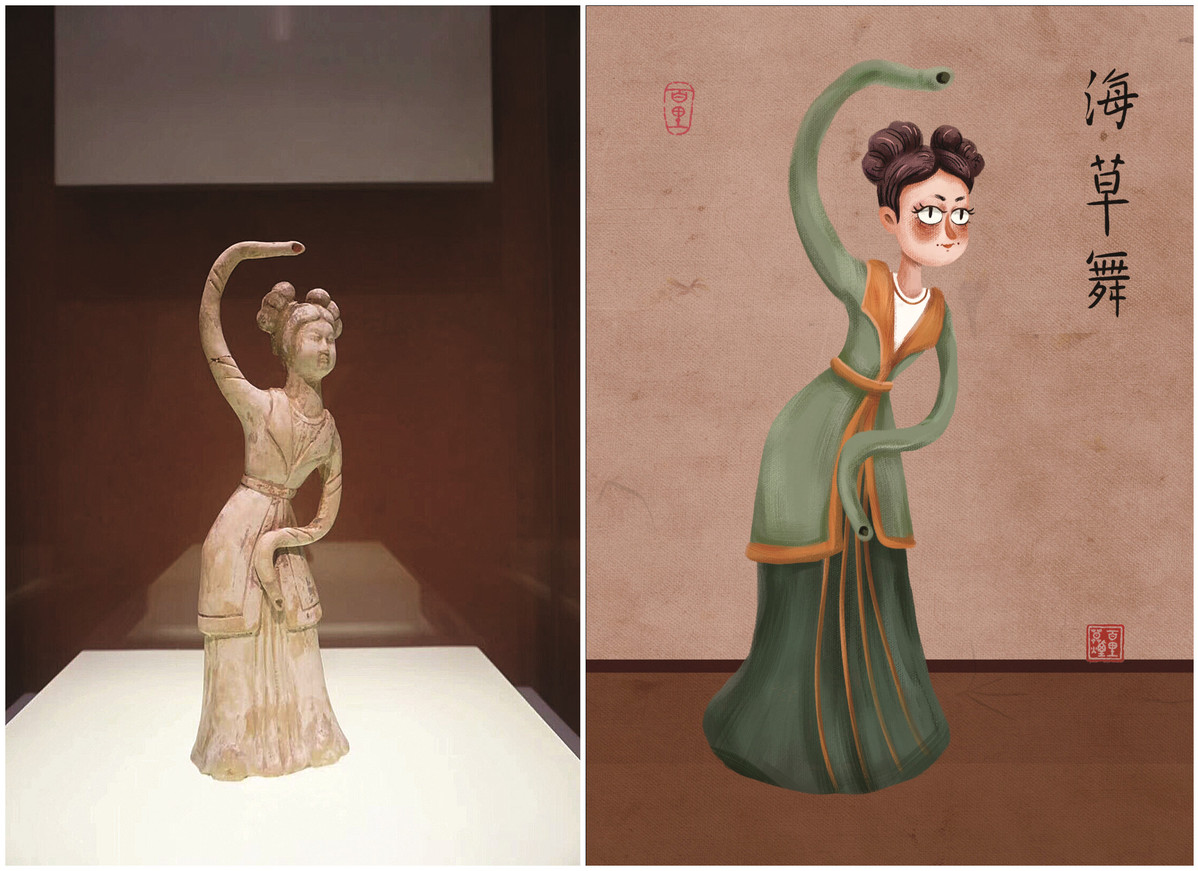 |
|
The gesture of the figurine resembles a gesture in 'haicao' dance. [Photo/Women of China] |
Although many netizens praised Wang for her creative ideas and interesting illustrations, some asked if Wang's works were disrespectful to cultural relics. Facing those critics, Wang answered: "We are living in an inclusive era. Regardless of the positive or negative feedback, it is important for the works to be seen, and to be discussed by viewers. In my opinion, if I create the works with respect to history, and if I spread my works in a positive way, I am doing something right."
Nature and museums represent the two most important "sources" for people to absorb inspiration as they create art, Wang says. "So why can't we make good use of the gifts from history?" Wang says people's aesthetic tastes develop in accordance with the times. "If the context and living environment of an era changes, it will naturally affect people's appreciation of art. For me, drawing illustrations is like a writer composing his/her works. Drawing offers me a way to express my feelings, and to depict my sense of value," Wang adds.
Pursuing a dream
In addition to drawing and painting, Wang likes yoga; in fact, she has studied yoga for several years. In 2016, she traveled to India, by herself, to take part in a yoga camp. She knew nothing about the Indic language, and her English was not good, so she used drawings tocommunicate with the locals.
"Drawing was the earliest method for people to communicate in ancient society. It is also important to smile, so others know you are easy to get along with. Drawing and smiling helped me make friends with the locals," Wang said.